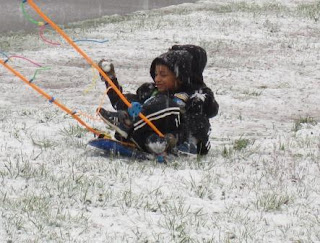The physics of ice skating. A lesson focusing on friction.

What about ice skating?
The physics of ice skating.

Friction (Science Readers: Content and Literacy)What Is Friction? (Rookie Read-About Science)
Friction (True Books: Physical Science (Paperback))
Movement and Forces
Field Trip
- crouching down
- pushing off from one leg (at a slight angle) while gliding the other skate.
- to stop turn the skate to increase the friction (or hit a wall)

Don’t have an ice skating trip planned?
You can still explore friction with the kids. If you are like me, you might envision the world’s worst case of carpet burn when you combine the words friction and kids. There are lots of other options.
A great experiment is a cutting board (we used plastic) and a variety of objects like a rubber eraser, ice cube, plastic toy and paper clip. Hold up the cutting board and see which one moves first? Which one moves fastest? You are demonstrating two different types of friction.

Dynamic and static friction
Dynamic friction occurs between two objects that are moving relative to each other. That means they rub against each other. That is what happens when you a sled rubs against the ground or when your kid drags your other kid across the carpet and someone gets carpet burn.
Static friction occurs between two objects that are not moving relative to each other. This is the type of friction that keeps an object from moving (like not sliding down a hill or when you put snow boots on with better grip to increase the friction and help you stand up in the snow).
In our experiment, we see static friction as we have to increase the angle of the cutting board higher and higher to cause the objects to move. Eventually, the pull of gravity is greater that the force of friction and the objects move. We see dynamic friction at work (or not ) when the objects fly across the board.

When the ice melts we begin to see it moving across the board faster and faster. This is a result of the lubricating nature of water decreasing the friction between the two solid objects. This is the same thing that oil does in an engine.
We assisted this process with a spray bottle of water. Have fun with friction, but try to keep the carpet burns to a medium.
Sick Science Fast Physics Kit Learning Resources STEM Force & Motion Activity Set, 20 Pieces
Learning Resources STEM Force & Motion Activity Set, 20 Pieces American Educational Electrostatic Lab Kit
American Educational Electrostatic Lab Kit
This is the first in our series on the science of winter sports.
Enter the details below to have it sent to your inbox.












